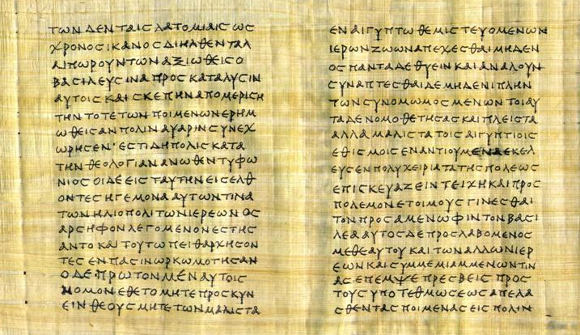Is the New Testament complete? Are there missing passages or books? This post will focus on a few issues in the New Testament that have created questions among scholars over the centuries.
Since the Gospels come first in the New Testament, it might be good to ask whether or not there were other credible gospel accounts that should be included. The first one that comes to most people’s minds is The Gospel According to Thomas. This manuscript first came to light in the late 1800’s and is dated around 200 AD.
The Gospel of Thomas became well known in the last thirty five years due to the efforts of Princeton scholar, Elaine Pagels. Her books, The Gnostic Gospels (Modern Library 100 Best Nonfiction Books) and Beyond Belief: The Secret Gospel of Thomas (Vintage)
, brought this manuscript to the public’s attention. Pagels argues that the Gospel of Thomas should be taken seriously, even discussing some of the reasons that it was not included in the New Testament canon.
Is the Gospel of Thomas a “missing Scripture?” Should it be included in the New Testament? While there will always will be a few scholars like Elaine Pagels who argue that Thomas should be included as Scripture, there are several reasons that the church has not accepted this manuscript as Scripture. First of all, Thomas is not a gospel at all. The four cannonical Gospels, Matthew, Mark, Luke, and John provide examples of what gospels are. They are narrative accounts of the life of Jesus. They provide (albeit incomplete) a historical framework of His life, some of Jesus’ teaching, some of His miracles, and a detailed account of His crucifixion and resurrection.
The Gospel of Thomas, on the other hand, does not follow this pattern at all. It does not tell a story or provide any type of narrative. Thomas is merely a collection of sayings and teachings that are attributed to Jesus. Some of these are in the form of conversations with His disciples.
Another reason that Thomas was not included in the New Testament canon is that the authorship is unknown. This fact alone would not exclude it from the New Testament but its late date clearly precludes the fact that Thomas the apostle was the author. Even though the authorship of some New Testament writings is debated, there are clear historical pathes leading back to an apostolic source or someone (Luke, for example) who was closely linked with an apostle.
A third reason that Thomas was not included in the New Testament is its teaching. To be fair, much of Thomas seems to be a quoting of some of Jesus’ more popular sayings. Even Pagels, however, acknowledges that much of Thomas is gnostic in its teaching and outlook. A couple of examples from the Gospel of Thomas might shed some light on what gnosticism taught. In verse seven it says, “Jesus said, “If you bring forth what is within you, what you bring forth will save you. If you do not bring forth what is within you, what you do not bring forth will destroy you.” This verse seems to indicate that people have the ability to save themselves. In other words, the truth is within everyone and all they have to do is let it out so that they can find salvation. This thought is at odds with traditional Christian doctrine which teaches that salvation comes from God, through Christ, and not from within ourselves.
One of the most controversial passages from Thomas is the very last one, “Simon Peter said to Him, “Let Mary leave us, for women are not worthy of Life.” Jesus said, “I myself shall lead her in order to make her male, so that she too may become a living spirit resembling you males. For every woman who will make herself male will enter the Kingdom of Heaven.”
This verse is disturbing on two levels. First of all, Simon Peter, the most emminent of the apostles and one of the leaders of the early church, states that women are not worthy of life. It is likely that here he is referring to eternal life, but whether Peter is talking about natural life or eternal life, he is not portrayed in a very positive light.
The other disturbing element in this verse is Jesus’ answer. He seems to be saying that the only way that women can enter the Kingdom of Heaven is by becoming male. What does this mean? Do women have to become male in their outlook? In the text, Jesus refers to women making themselves male. How do they do that? In some sects of gnosticism, men took vows of celibacy in an attempt to keep their spirits pure and undefiled. Women were not always welcome in every gnostic church or group. They were considered distracting to the men who were trying to purify their spirits. Scripture, however, shows high regard for women.
To be continued…
Would you considering investing in our work in Brazil? My wife, Annie, and I are serving here developing leaders and helping our C3 Churches. Just click here to be a part! Obrigado!


